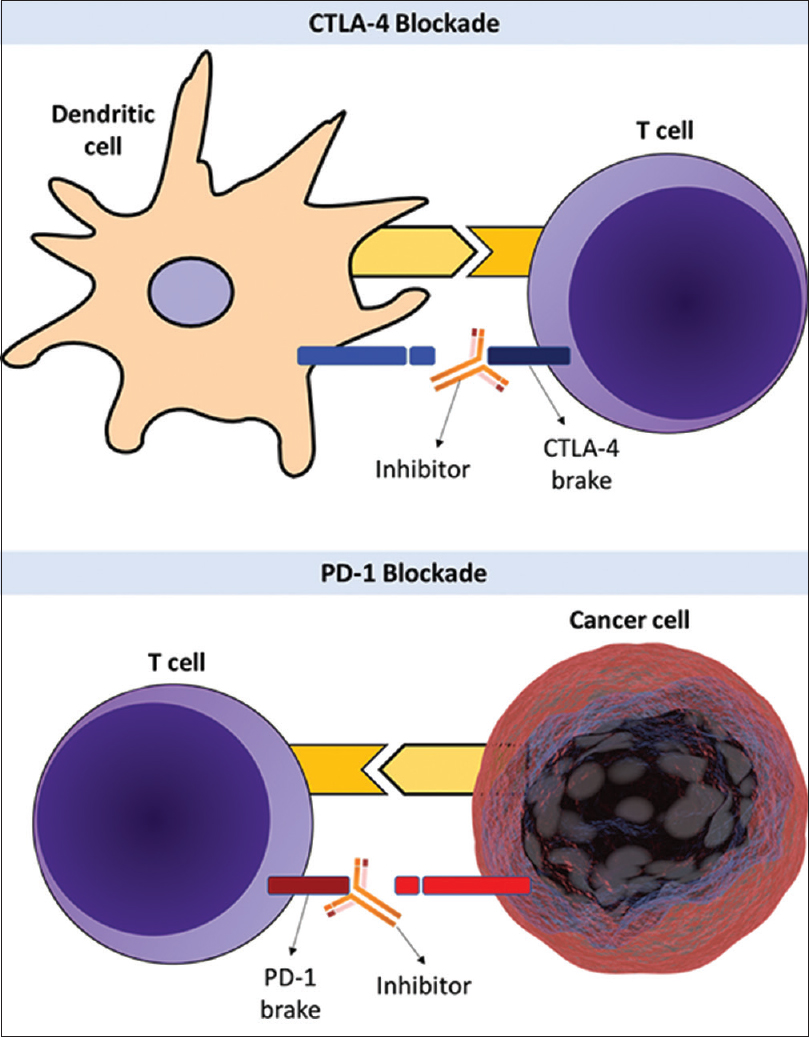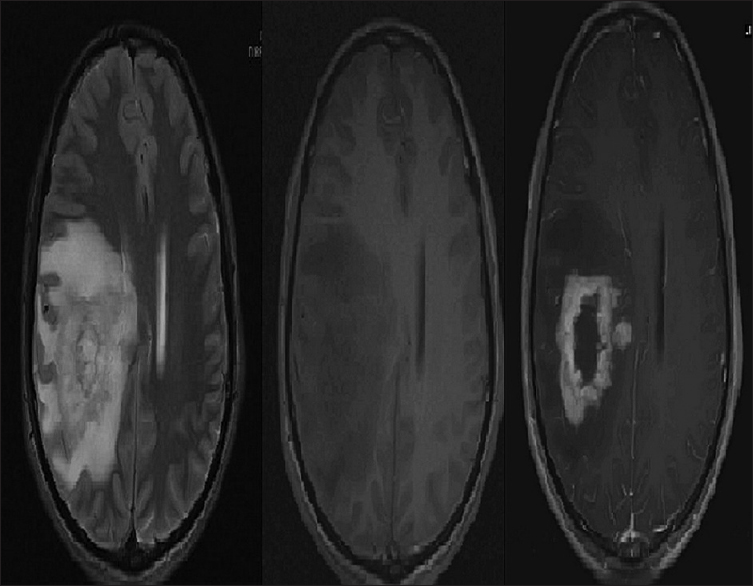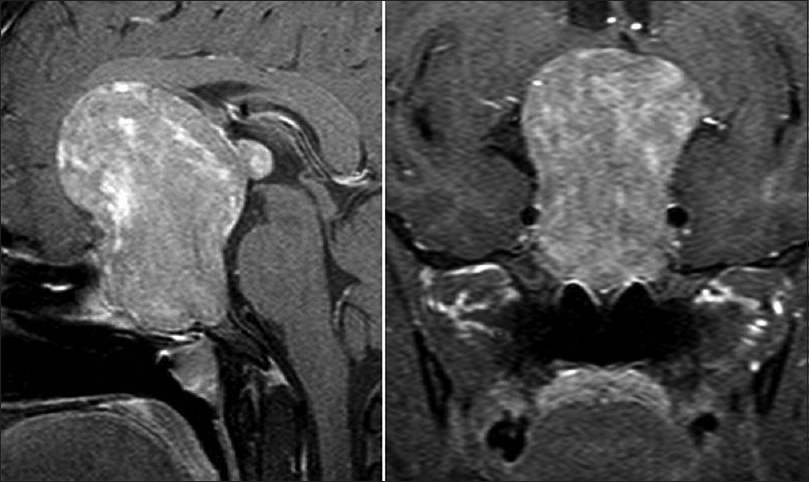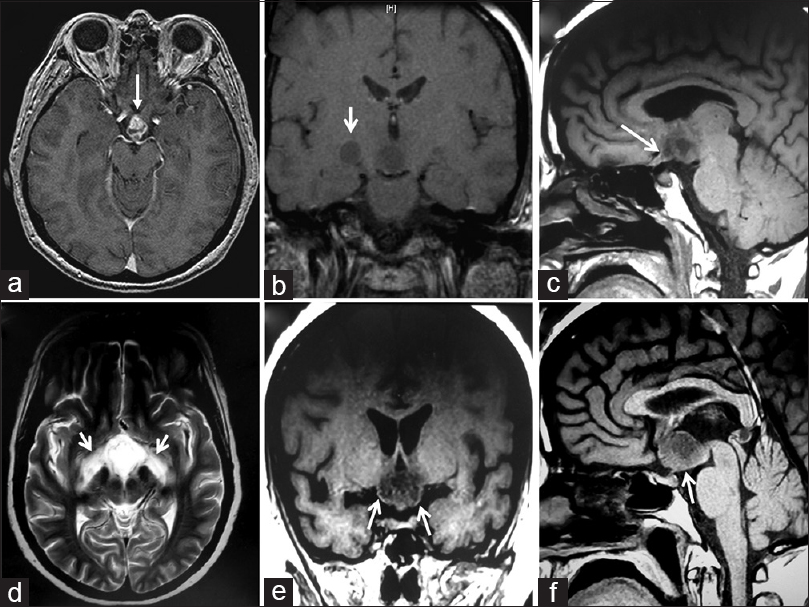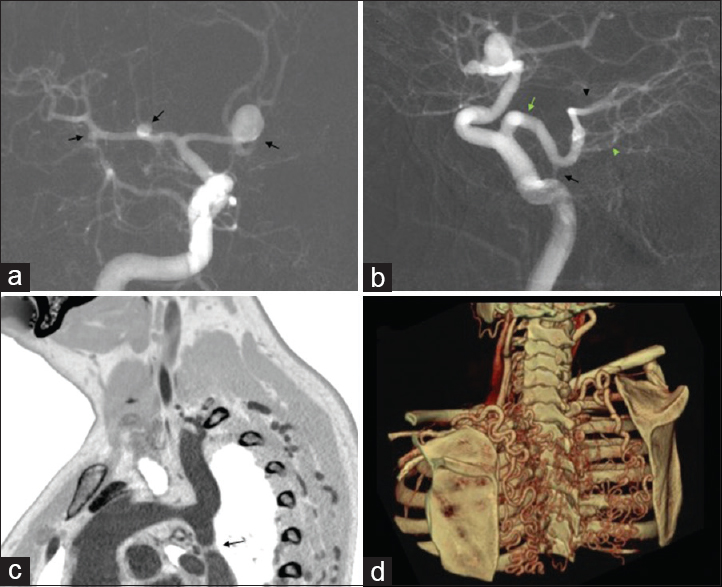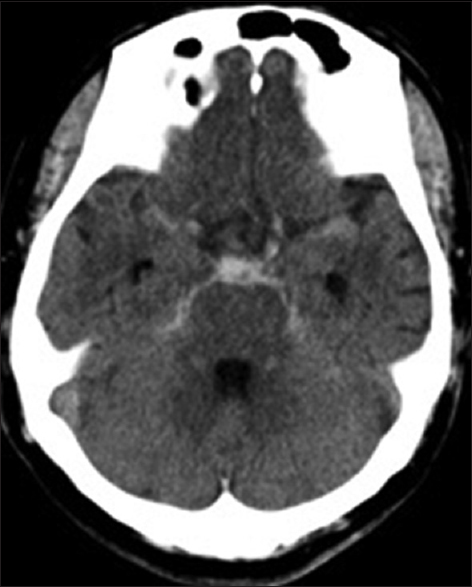Adaptive hypofractionated gamma knife radiosurgery in the acute management of brainstem metastases
Date of publication: 29-Jan-2019
Background:Intrinsic brainstem metastases are life-threatening neoplasms requiring rapid, effective intervention. Microsurgery is considered not feasible in most cases and systemic treatment seldom provides a successful outcome. In this context, radiation therapy remains the best option but adverse radiation effects (ARE) remain a major concern. A dose-adaptive gamma knife procedure coined as Rapid Rescue Radiosurgery (3R) offers the possibility to treat these lesions whilst reducing the risk of ARE evolvement. We report the results of 3R applied to a group of patients with brainstem metastases.
Immune checkpoint inhibitors: Advances and impact in neuro-oncology
Date of publication: 25-Jan-2019
Utility of MRI neurography in neurofibromatosis type I: Case example and review of MRI neurography literature
Date of publication: 25-Jan-2019
Background:Neurofibromatosis is an autosomal dominant disorder of the nerves, resulting in café-au-lait spots, axillary freckling, macules, and neurofibromas throughout the nervous system. Diagnosis of this condition has in the past been mainly clinical, but the usage of magnetic resonance imaging neurography (MRN) is a new diagnostic modality. Here, we report on a case of neurofibromatosis type I (NF-1) that was diagnosed using MRN after a protracted clinical course.
Diffusion-weighted magnetic resonance imaging may be useful in differentiating fungal abscess from malignant intracranial lesion: Case report
Date of publication: 25-Jan-2019
Background:Diffusion-weighted magnetic resonance has a well-defined role in differentiating between important intracranial lesions. Sometimes, the surgeon is faced with a dilemma of how to diagnose an infectious versus malignant lesion.
Neurocytoma mimicking macroadenoma
Date of publication: 21-Jan-2019
Background:Intraventricular and extraventricular central neurocytomas (CN) are equally frequent among 20–40-year-old men and women. However, sellar and suprasellar extraventricular CN are extremely rare, with only 12 reported cases.
Intrachiasmatic craniopharyngioma: Assessment of visual outcome with optical coherence tomography after complete surgical removal
Date of publication: 21-Jan-2019
Background:Optic chiasm invasion by a craniopharyngioma (CP) is exceptional. Surgical treatment of intrachiasmatic CPs associates a high risk of chiasm injury, which should be properly addressed before surgery.
Multiple aneurysms, aortic coarctation, and persistent trigeminal artery. A unique presentation
Date of publication: 18-Jan-2019
Usefulness of preoperative cone beam computed tomography and intraoperative digital subtraction angiography for dural arteriovenous fistula at craniocervical junction: Technical case report
Date of publication: 18-Jan-2019
Background:Direct surgery is commonly selected for the treatment of cranio-cervical junction dural arteriovenous fistula and its outcome is more satisfactory than that of embolization. Intraoperative treatment evaluation is relatively easy in embolization, whereas in direct surgery it can be difficult.
Usefulness of preoperative cone beam computed tomography and intraoperative digital subtraction angiography for dural arteriovenous fistula at craniocervical junction: Technical case report
Date of publication: 18-Jan-2019
Background:Direct surgery is commonly selected for the treatment of cranio-cervical junction dural arteriovenous fistula and its outcome is more satisfactory than that of embolization. Intraoperative treatment evaluation is relatively easy in embolization, whereas in direct surgery it can be difficult.
Functional and aesthetic evaluation after cranial reconstruction with polymethyl methacrylate prostheses using low-cost 3D printing templates in patients with cranial defects secondary to decompressive craniectomies: A prospective study
Date of publication: 15-Jan-2019
Background:Cranial reconstruction surgery is a procedure used as an attempt to reestablish the cranial bone anatomy. This study evaluates the symptomatic and aesthetic improvement of patients with cranial defects secondary to decompressive craniectomies after cranial reconstruction with customized polymethyl methacrylate (PMMA) prostheses. Secondly, we aim to divide our experience in the production of these prostheses with a low-cost method.



